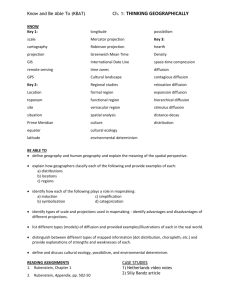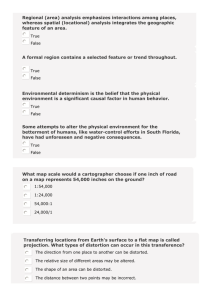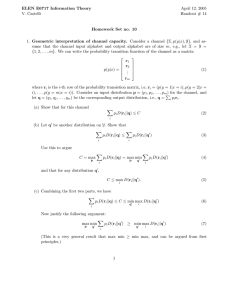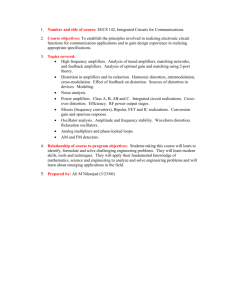TEST: 40 Multiple Choice Questions (80 points) 1 Free Response
advertisement
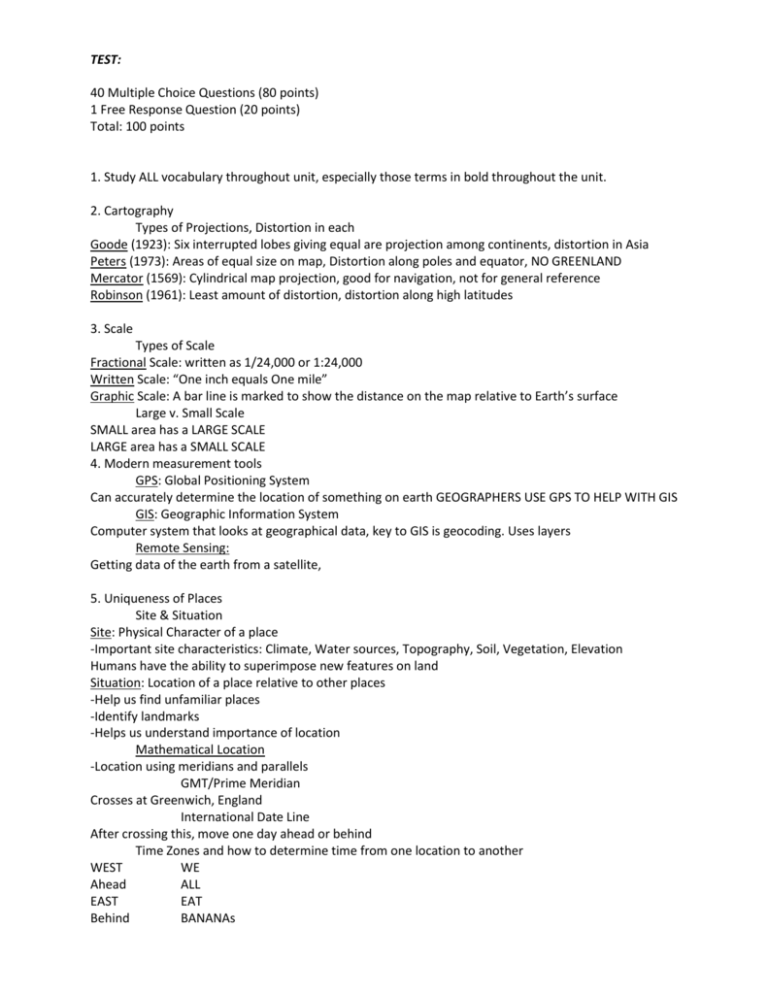
TEST: 40 Multiple Choice Questions (80 points) 1 Free Response Question (20 points) Total: 100 points 1. Study ALL vocabulary throughout unit, especially those terms in bold throughout the unit. 2. Cartography Types of Projections, Distortion in each Goode (1923): Six interrupted lobes giving equal are projection among continents, distortion in Asia Peters (1973): Areas of equal size on map, Distortion along poles and equator, NO GREENLAND Mercator (1569): Cylindrical map projection, good for navigation, not for general reference Robinson (1961): Least amount of distortion, distortion along high latitudes 3. Scale Types of Scale Fractional Scale: written as 1/24,000 or 1:24,000 Written Scale: “One inch equals One mile” Graphic Scale: A bar line is marked to show the distance on the map relative to Earth’s surface Large v. Small Scale SMALL area has a LARGE SCALE LARGE area has a SMALL SCALE 4. Modern measurement tools GPS: Global Positioning System Can accurately determine the location of something on earth GEOGRAPHERS USE GPS TO HELP WITH GIS GIS: Geographic Information System Computer system that looks at geographical data, key to GIS is geocoding. Uses layers Remote Sensing: Getting data of the earth from a satellite, 5. Uniqueness of Places Site & Situation Site: Physical Character of a place -Important site characteristics: Climate, Water sources, Topography, Soil, Vegetation, Elevation Humans have the ability to superimpose new features on land Situation: Location of a place relative to other places -Help us find unfamiliar places -Identify landmarks -Helps us understand importance of location Mathematical Location -Location using meridians and parallels GMT/Prime Meridian Crosses at Greenwich, England International Date Line After crossing this, move one day ahead or behind Time Zones and how to determine time from one location to another WEST WE Ahead ALL EAST EAT Behind BANANAs 6. Regions (can you indentify examples?) Formal: Also called Uniform and Homogeneous Ex. Any state, country, Montana Share a cultural value such as a common language Functional: Also called Nodal Has a center, or a node Ex. Wheat fields, Newspapers Vernacular: Also called Perceptual Ex. The South Cultural Identity 7. Distribution: The arrangement of a feature in a space Density: The frequency with which something occurs in space Arithmetic-total number of objects in an area Physiological-The total number of people over arable land Agricultural-The total number of farmers over arable land Concentration: The extent of a feature’s spread over space If objects are close, they are clustered if they are apart, they are dispersed Patterns: Geometric arrangement of objects in space 8. Globalization: Force or process that involves the entire world and results in making something worldwide in space Diffusion: Process by which a characteristic spreads across a space Hearth: Where diffusion starts Relocation Diffusion: Spread of an idea through physical movement of people Expansion Diffusion: Spread of a feature from one place to another in a snowballing process. Contagious: Spread of an idea through persons or nodes of authority or power to other persons or nodes Hierarchical: rapid, widespread diffusion of a characteristic of throughout the population Stimulus: Spread of an underlying principle 9. Culture Cultural Landscape: An area of earth modified by human habitation Cultural Ecology: The geographic study of human-environment relations Environmental Determinism: Direct environment causes social development Possibilism: Physical environment ma limit human actions, but people have the ability to adjust to the environment. How do these ideas relate to Djibouti’s situation? The factors based on the culture in Djibouti are more from determinism because the physical features helped to shape their modern day culture. The physical features brought in other modern countries to develop Djibouti.

